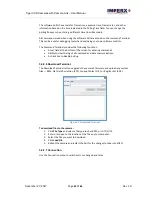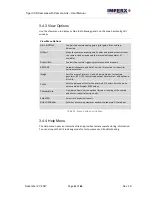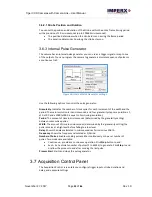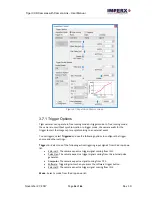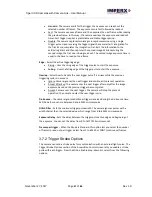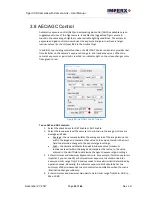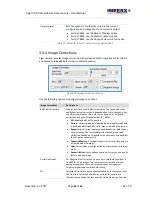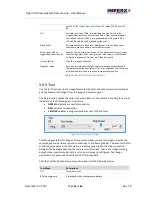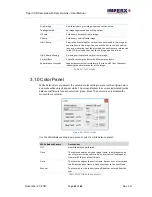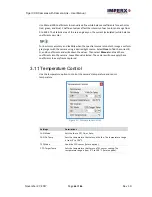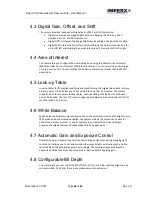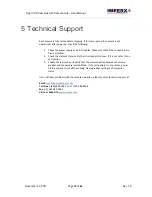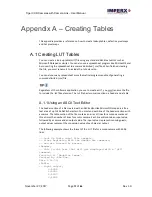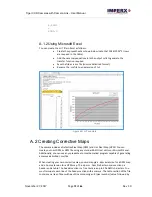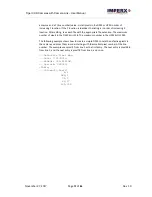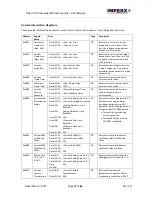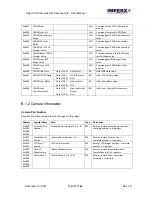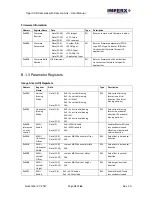
Tiger CCD Cameras with Camera Link
– User Manual
November 27, 2017
Page
63
of
86
Rev 1.0
Output Format
Sets the number of output taps used in the current
configuration and mapped to the Camera Link output.
•
For the T6640, use the Base or Medium option.
•
For the T8810, use the Medium (8 taps) option
•
For the T8820, use the 16-tap Camera Link Full option.
Table 17: Bit depth, bit shift, output format descriptions.
3.9.4 Image Corrections
Tiger cameras provide image correction with preloaded defect maps and tables (static)
and without preloaded defect maps or tables (dynamic).
Figure 54: Image correction settings.
Use the following options to configure image corrections:
Image Corrections
Descriptions
Bad Pixel Correction
Enables static or dynamic pixel corrections. You can enable static
and dynamic pixel correction independently or simultaneously. You
can adjust the intensity threshold for the hot pixel or defective
corrections using the Threshold slider (0
–
4095).
•
Off:
disables Bad Pixel Correction.
•
Factory:
corrects bad pixels identified with predetermined and
preloaded defective and hot pixel maps created by the factory.
•
Dynamic:
pixel correction works independently of defective or
hot pixel maps. The camera determines which pixels need
correction based on a threshold value you create and performs
the correction automatically.
•
Dynamic&Factory:
Combines dynamic pixel correction and use
of factory bad pixel maps.
•
User:
Corrects bad pixels identified by user-created correction
maps.
•
Dynamic&User:
Combines dynamic pixel correction and use of
factory bad pixel maps.
Correction Depth
For Dynamic Pixel Correction, you can set a threshold level from 0
to 4095 for 12-bit images. The camera will correct all hot pixels
having an amplitude (hot pixel intensity minus average pixel
intensity) higher than the threshold setting.
FFC
Activates a flat field correction table created by the factory or user.
The Flat Field Correction mechanism corrects for variation in
illumination caused by the lens over the field of the array. You can

